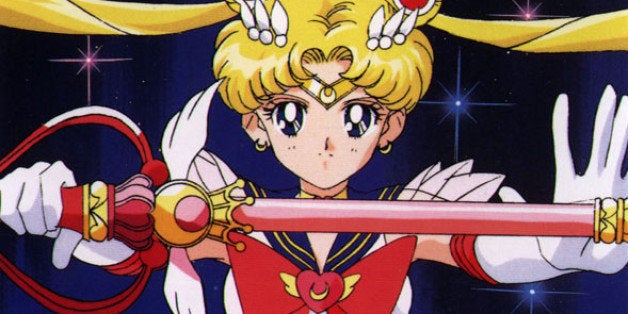
It's hard to remember a time during my childhood when I was not totally enamored with the show "Sailor Moon". Seeing women not only dealing with real issues but also clobbering monsters and saving the day? You couldn't have pulled me away from the screen with industrial-strength construction equipment. It was rare to find a series in the 90s where women were fighting evil in-between talking about boys or clothing. While I, like many people who grew up in that decade, loved the heavily altered and censored, occasionally awkward English translation (or "dub") without questions, there was one thing seemed weird to me: the relationship between Sailors Uranus and Neptune.
In the version that aired on American screens, courtesy of DiC, Amara and Michelle, who transformed into Sailor Uranus and Sailor Neptune respectively, were introduced in 2000 as "cousins", but they certainly didn't act like any cousins I knew. They were always together, affectionate with each other and even were willing to die for each other. I love my cousins, but enough to doom the world for them? Something seemed amiss to me, even though I was only in the fourth grade and had yet to even hold a boy's hand.
As I got older, and with increasing access to the Internet, I discovered that not only were the two women not blood-related at all in the original Japanese version, but that they were lovers. Suddenly everything clicked into place; the weird allusions to boyfriends that didn't make appearances, their intimacy, the fact that they won an "Affection Contest" designed for people who were dating. The more I read, the more I realized the English translators changed a lot more characters to fit a heteronormative view of the world. Zoisite, a villain from the first season, was changed into a woman because of his romantic relationship with another male villain. Fisheye, another baddie from Sailor Moon SuperS, got the same treatment because he often went after male victims and was decidedly feminine. In fact, a whole season was never brought to the states because there were new Sailor Scouts who changed gender when they transformed. The American team was so worried about showing gay or lesbian characters that they went out of their way to create whole new identities and relationships for them. Being gay in Japan has its own issues and stigma, but they are present and often positively portrayed in Japanese media, especially anime.
At the time, I didn't think to question it because there were no other gay people on TV, least of all children's cartoons, I just assumed they were changed for a good reason. 14 years later, I realize these changes contradicted the very message of the show and were emblematic of the still prevalent issue of media representation.
"Sailor Moon" was about immature, cry baby teenager, Usagi (or Serena, depending on the version you saw) who found power and strength in friendship and staying true to herself. People weren't puzzle pieces that needed to be designed into the "right" shapes, but were in fact perfect as they were. The other scouts had their own personalities and flaws, from Mars' superstitious and brash nature, Venus' boy-craziness and need to please, even Mercury's shyness and difficulty making friends. The fact that the American translators changed the identities and sexualities of four reoccurring characters says the opposite -- that these characters were not suitable as they were and had to ultimately be changed to be "acceptable", a troubling thought when two of the characters were heroes themselves whose only "fault" was being in a loving, consensual relationship.
The world has changed a lot in the 14 years since their debut on American TV screens fact that these women will now be just another gay couple among the many, real or fictional, to grace screens across the world. LGBT couples of all kinds have appeared on major network shows, whether real or fictional, changing the television landscape for the better.
VIZ Media is not one to be left in the past, and when they announced that they now owned the rights to the series, as well as the 2014 remake "Sailor Moon Crystal", they added that they will be reversing a lot of the changes made by the DiC translation. One of those big changes is that Sailors Neptune and Uranus will be together once more, not as cousins but as partners in combat and love, nowhere near that fictional closet they were forced into for over a decade. This means generations of anime fans will be able to enjoy the show for the same reasons I did; because the women in it felt like real people, people I knew and who I wanted to be like. Children and adults of all ages can see themselves in these people, whether they are gay or straight, cisgender or transgender, and can find the courage to be who they really are.